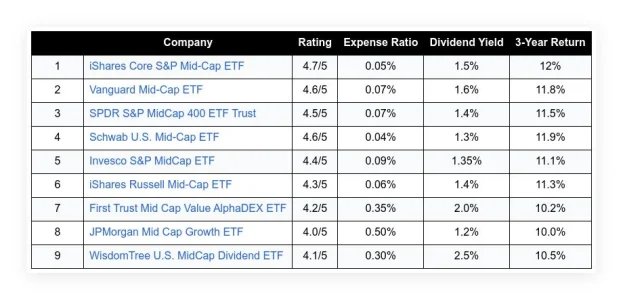In a time of economic uncertainty and fluctuating stock markets, people often ask me how to handle their 401(k)s. As you know, we are living in crazy times and continue to live in crazy times. As a result, this question is relevant for many people right now who are investing in their 401(k)s.
However, there are 8 things you shouldn’t do with your 401(k) — despite the crazy times we are living in.
Table of Contents
Toggle1. Not habitually contributing to your 401(k).
Insufficient contributions, inconsistent contributions, and failure to increase your contributions in line with salary increases will all come back to haunt you when you retire. With a 401(k), you can save up to $22,500 in 2023. You can then compound that amount over time. A bonus of $7,500 is available to those 50 and older, which really accelerates compounding.
But, here’s the best part of a 401(k). After it’s set up, not much needs to be done.
In fact, investing in a 401(k) allows you to automatically save for retirement without giving much thought to it. That means contributions to your 401(k) will be made before you receive your paycheck. That’s all there is to it.
But, that’s not all.
In many plans, you can opt for an automatic increase in contributions by one percent each year. In some cases, people choose the effective date of their salary increase, thereby contributing more to their contributions. Typically, these automatic increases are capped at 10%, though some plans may allow them up to 15%.
Additionally, some employers match your 401(k) contributions up to a certain percentage. If you have access to this benefit, you should certainly take advantage of it – but don’t stop there.
If you have a 401(k), you should invest more than your employer will match. Make sure you consistently contribute to the amount of money you need for retirement.
In general, you should begin investing for retirement with a 401(k) as soon as possible. Besides securing your future, it’s so simple that there are no excuses. This is unless you are comfortable living solely off of social security benefits, which is highly discouraged.
2. Remaining in debt.
What do you do if you aren’t confident about your 401(k)? Alternatively, maybe you just don’t like the market or the economy.
Rather than contributing to your 401k, you might consider paying off your debts. The debt might be student loans, credit cards, or paying off your house so that you are completely debt-free.
In my opinion, paying off debt is a wise choice, so that you don’t have to worry about those payments in the future.
But, to get started, here are some tips from Holly Johnson in a previous Good Financial Cents article:
- Consider using the debt snowball method. To become debt-free, the debt snowball method is often hailed as the most efficient and effective method. In this case, you’ll begin by listing all of your debts in order of smallest to largest balance. By paying off each small balance, you’ll move down the list, making minimum payments to the balances you can afford.
- Face the debt avalanche. Unlike the debt snowball, the debt avalanche works differently. To prioritize your loan balances, list them by interest rate rather than by smallest balance. The goal is to make minimum payments on everything else while paying as much as possible on your highest-interest debt each month. You will eventually pay off all your high-interest debt, leaving only low-interest debt.
- Take advantage of 0% APR credit cards to pay off debt faster. The solution to credit card debt may be a credit card, but be cautious. There are certain kinds of credit cards, such as 0% APR and balance transfer cards, that offer introductory offers that you can use to save money and pay off your debt.
- Refinance or consolidate your debts. A refinance could result in a better deal and a lower interest rate. If you need a loan with a lower interest rate and better terms, you can refinance with a different lender.
- Get a part-time job or pick up a side hustle. Taking on a part-time job or picking up a side hustle is another way to speed up your journey once you figure out how to pay off your debts. The more money you earn through additional labor – or passive means – the faster your debt can be repaid.
3. Putting all your eggs in one basket.
Another possibility? Invest outside of your 401(k) to diversify your portfolio.
For example, if you want more access to your money, you might consider a Roth IRA. You would contribute to a taxable brokerage account, into which you could buy individual stocks, mutual funds, or ETFs like the S.P. 500. If you want to buy dividend stocks, you could choose the dividend Aristocrats. These stocks have increased their dividends for a long time, so those are some options for you to choose from.
The maximum contribution you can make to an IRA is $6500, or $7500 if you are age 50 or older. Only earned income can be used to make contributions. In other words, it is income earned from wages, salaries, commissions, self-employment, or contracts. It excludes income from unearned sources, such as pensions, Social Security, and investments.
Also, in case you were wondering, you can contribute to both an IRA and a 401k. Contribution limits remain in effect, however.
Cryptocurrencies and real estate are still viable investments as well. Maybe you want to start an Airbnb business or you want to buy a duplexes or townhomes if that interests you, those are options you might consider.
4. Not investing in yourself.
My favorite option is to invest in yourself if you aren’t contributing to a 401(k). But what does that really mean?
Maybe that means returning to school and earning a degree. Perhaps it’s a master’s or doctoral degree. It might be getting a certification in whatever field you’re in.
This is something I talk about a lot. Nevertheless, it is worth repeating. The CFPA certification, which stands for a certified financial planner, was one of my best investments back when I was a practicing financial planner.
Obviously, that was a huge time and monetary investment. For 11 months straight, I had to be out of town three or four days a week. The trip was worth it since I was away from my family only four days a month.
It is true that I did not receive a raise. However, after I earned my CFP certification and got the alphabet soup behind my name, I was able to establish trust instantly with potential clients. Since I was a certified financial planner, I was also featured in the media.
Another way to invest in yourself? Investing in therapy.
There are times when people are reluctant to admit they need therapy, even though it is something they need. Let me tell you that I have been in individual therapy. In the past, I’ve had couples therapy and counseling. Regardless, this was one of my best investments that helped me unlock a great deal of childhood trauma and build a strong spiritual foundation.
[Related: What to Do with Your 401(k) During a Recession?]
5. Raiding your 401(k).
The worst thing that you can do for your retirement is to raid your piggy bank, whether you cash it out, take out a loan, or take a hardship withdrawal.
In short, you should never borrow from your 401(k). And, there are two reasons why I say this:
- You will earn less money. Invested money makes money, whereas uninvested money doesn’t. The whole purpose of putting money in a 401(k) is defeated when you withdraw it.
- It is possible that you will be charged additional penalties and taxes. When you cash out your 401(k) plan before age 59 ½, you will typically have to pay a 10 percent penalty on top of the income tax owed. In addition, some plans may charge a fee for hardship withdrawals or loans. Furthermore, if you aren’t able to repay your 401(k) loan on time, your unpaid balance will be considered a distribution. The result is an income tax increase along with a 10% penalty.
Forbes.com contributor John Wasik writes:
“Repeat after me: My 401(k) is not a piggy bank, nor is it a good source of cash.”
401(k)s shouldn’t be tapped for loans. For emergencies, you should have an emergency fund.
6. Investing solely in target date funds.
I’m not a big fan of target date funds. However, in most 401(k)s, you will often find target date funds as options.
In case you’re not aware, target date funds are funds that typically have a retirement date at the end of the name. A target date fund is a fund you invest in that targets the year you would like to retire, and then that portfolio shifts from an aggressive to a conservative strategy as you retire.
While this seems great, the mutual funds within these target-date funds are usually pretty mediocre. The reason for this is two downsides that you’ll often see:
- High fees. Mutual funds have excessive fees that are going to take money from your investments that you could have invested instead.
- Weak performance. Compared to other mutual funds or market benchmarks, the mutual funds do pretty poorly.
But, there’s another problem I have with target funds. You often don’t what exactly you’re invested in.
When signing up for a 401(k), it’s not uncommon for people to accept the default investment option, usually a target-date fund — which is again based on their projected retirement age.
Why is that an investing mistake? Regularly reviewing your 401(k) plan’s investment options with a focus on fees is essential. Participants in 401(k) plans bear most of the fees, which leaves less money in your account for compounding.
Every year, your 401(k) plan must send you a fee disclosure statement. Therefore, make sure to pay attention to it. Investing just enough to qualify for your employer match and saving other funds in an IRA with low fees might be a better option if your 401(k) fees are high.
7. Consistently failing to review your 401(k) plan.
Contributions to your 401(k) plan are made directly out of your paycheck, which makes it a great way to ensure contributions are made, but you shouldn’t just sit back and relax.
Regularly reviewing your 401(k) plan is a better option.
In the event that new 401(k) funds become available, you’ll want to learn about them to consider them as potential better investment options. When you get closer to retirement, you’ll want to consider your investment mix’s volatility.
8. Scaling back on your contributions.
According to Schwab, about 15% of investors are cutting back on their retirement contributions due to inflation in 2022. The problem is that this can backfire over time, since you are paring down investments that will grow over time and provide you with income in retirement.
“I would say that the last resort for someone is to reduce their 401(k) contribution,” said Catherine Golladay, managing director and head of workplace financial services at Charles Schwab, told CBS MoneyWatch. However, given the current strain on household budgets, she can understand why some people feel compelled to pull back on putting money away.
Given the current stock market conditions, one might also be compelled to scale back. It seems counter-intuitive to throw more money into the market when stocks are down. Investment experts note that dollar-cost averaging, which is a technique that is proven to provide some of the best investment returns, is possible when you invest a fixed amount every paycheck through your 401(k).
“One thing we remind families is, yes, money is tight but if you buy a good investment that’s only temporarily down in value, you are using the concept of dollar-cost averaging that will work in your advantage,” Glenn Williams, CEO of Primerica, told CBS MoneyWatch. “And you will have more time, which you won’t have later on.”
FAQs
What is a 401(k) plan?
Most American employers offer 401(k) plans, which are tax-advantaged retirement savings plans. In the United States, it is named after a section of the Internal Revenue Code (IRC).
401(k) accounts allow employees to direct a portion of their paychecks to invest. A portion or all of that contribution may be matched by the employer. Employees usually have the option of choosing from a variety of investment options, such as mutual funds.
How does a 401(k) work?
In a retirement plan sponsored by your employer, you invest money to grow over time with a tax advantage. A percentage of your income usually determines how much you contribute to your 401(k). Upon receiving your paycheck, your employer automatically withholds a portion for your account.
You can reduce your taxes today by contributing money to a traditional 401(k) before your federal income taxes are calculated. As soon as you withdraw money from a retirement account, you will have to pay taxes on it. Your agreement to delay withdrawals (without penalty) until you reach age 59 12 is made in exchange for this increased tax efficiency.
Roth 401(k)s are offered by some employers. Because Roth contributions are made with after-tax funds, you don’t get an immediate tax deduction in a Roth plan. Rather than paying taxes on withdrawals, you expect your money to grow tax-free.
You’ll get regular statements in both types of 401(k) plans, where you’ll have a separate account registered in your name. The best investment plan for your age, risk tolerance, and retirement time is typically chosen from a menu of options. There will be differences in the investments offered by 401(k) plans, as well as in whether you must select your own investments or have your account managed.
How much can I contribute to my 401(k)?
The IRS sets annual limits on how much you can contribute to a 401(k). When determining the limits on annual contributions, the IRS considers inflation and other factors related to the market. There will be a $22,500 limit in 2023. In 2023, the IRS allows “catch-up” contributions of up to $7,500 for those 50 and older.
Annual limits change frequently, so it’s a good idea to review them each year. It might be a good idea to adjust your contributions in the new year if you’re already contributing the limit and it rises.
In case of an economic depression, how can your 401(k) be protected?
There’s nothing you can do about what happens in the stock market, but you can control what you do in times of crisis. If you want to protect your savings, follow these investing rules.
- Diversify. Investing in various asset classes is very unlikely to result in all of them falling the same amount, and some may even rise. It is important to diversify your investments to increase the odds that your overall return will rise in a market drop than if you were overweighted in one or two investments.
- Rebalance your portfolio. To ensure your portfolio remains aligned with your original asset allocation, rebalance your portfolio once a year. By doing this, you will avoid overweighting in areas of the market that may do well for a while but then drop, which could lead to greater losses.
- Keep contributing. In a market crash or recession, you can reduce market losses by continuing to contribute on a monthly basis to your 401(k) plan. To compensate for stocks that you may have purchased at higher prices, you are able to buy stocks at a cheaper price.
- Be aware of your risk factors. A good way to avoid panicking after a big drop is to assess your risk tolerance, preferably before you begin investing in your 401(k). Riskalyze, for example, is a tool that can help you assess risk.
















